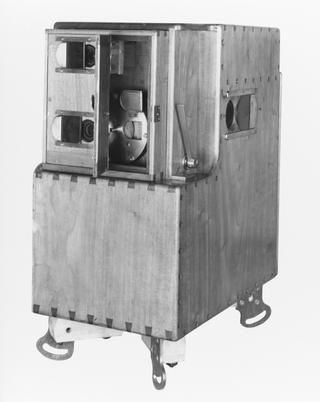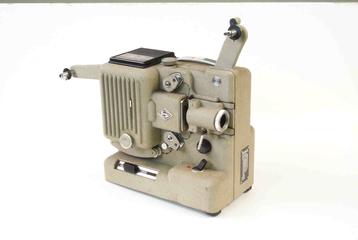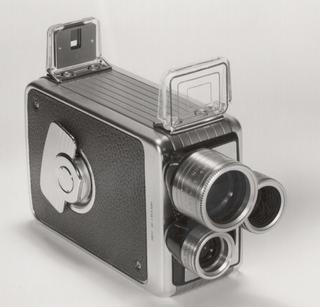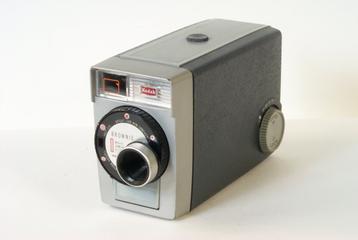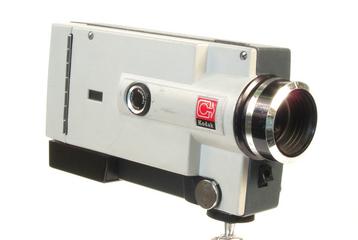
Newman and Sinclair Autokine Model E 35mm Cine Camera
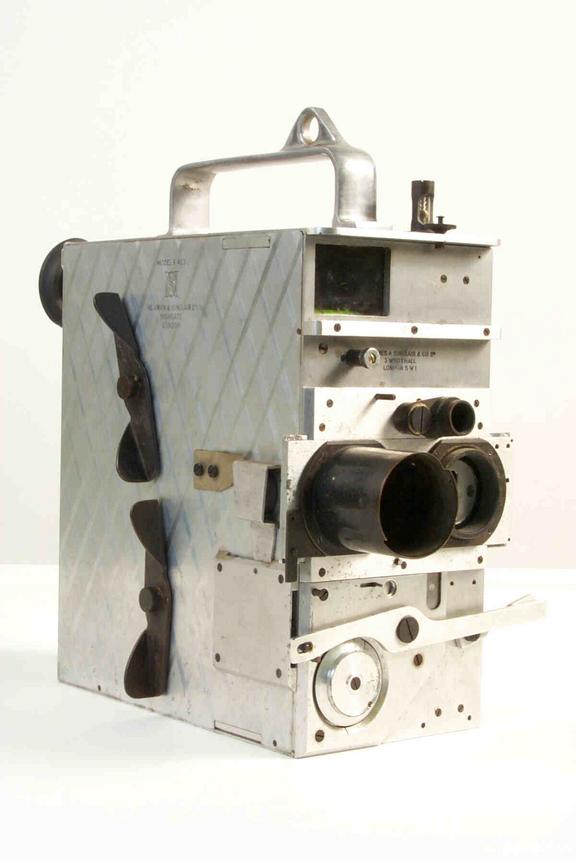
Newman and Sinclair Autokine Model E 35mm cine camera. With two magazines. Serial No 423. Cine camera for 35mm film in internal 200 foot reel magazine. Sliding plate with fittings for two lenses which are missing. With double spring clockwork motor, adjustable speed. Direct vision optical viewfinder with spirit level and footage indicator visible, parallax compensated rear sight.
This camera was manufactured by Newman and Sinclair, London from 1927 onwards. Invented by Arthur Samuel Newman (1861-1943), it is constructed of duralumin, a lightweight metal. It is powered by a spring-driven motor which could run a full 200 feet load of film continuously, and works at speeds between 10 and 24 frames per second. It also has a variable shutter which can be adjusted to create 'fade in' and 'fade out' effects and a direct vision optical viewfinder. Because it is light, hardwearing and can be used hand-held, the camera was popular with newsreel and documentary film-makers for over three decades. Documentary-makers such as Robert Flaherty, Basil Wright and Humphrey Jennings used these cameras.
Details
- Category:
- Cinematography
- Collection:
- Kodak Collection
- Object Number:
- 1990-5036/3290
- Materials:
- aluminium alloy, rubber (unidentified) and glass
- Measurements:
-
overall: 310 mm x 180 mm x 310 mm,
- type:
- cine camera
- credit:
- The Kodak Collection at the National Media Museum, Bradford
